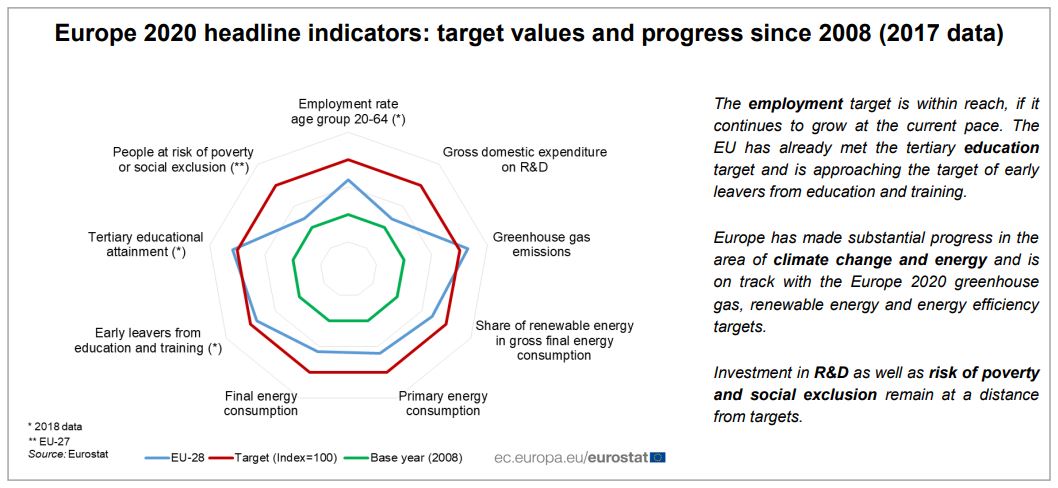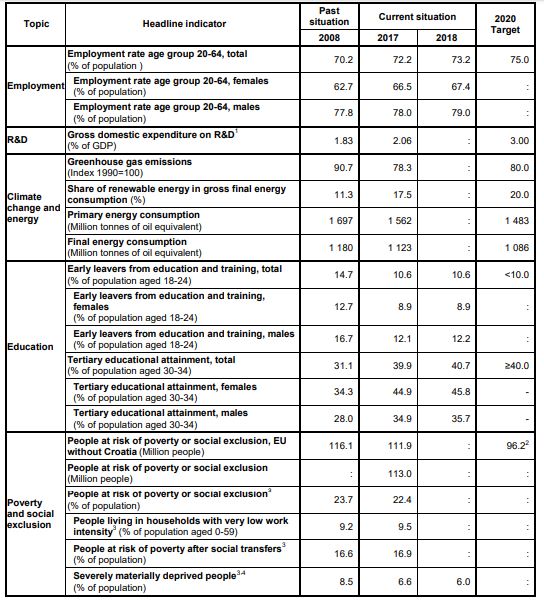The Europe 2020 strategy – EU’s agenda for smart, sustainable and inclusive growth – was adopted by the European Council in June 2010 with the aim to overcome structural weaknesses in Europe’s economy, improve its competitiveness and productivity and underpin a sustainable social market economy. The EU targets are set in the
five thematic areas: employment – research & development (R&D) and innovation – climate change and energy – education – poverty and social exclusion. EU Member States have translated these objectives into their national targets in order to reflect their situation and possibilities to contribute to the common goals.
The end of the Europe 2020 life cycle is approaching, which makes monitoring as important as ever. Eurostat, the statistical office of the European Union, issues the 2019 edition of the publication ‘Smarter, greener, more inclusive?’, which analyses the progress of the EU and its Member States towards the targets of the Europe 2020 strategy.
A complete picture of trends in the Europe 2020 headline indicators
Eurostat monitors progress towards the Europe 2020 targets using nine headline indicators; the indicators’ breakdowns focus on specific subgroups of society or the economy presenting a more detailed picture. The analysis in the five thematic areas shows trends in the headline indicators over the past years, up to 2017 or 2018, depending on data availability.

The radar chart illustrates the current situation of the progress made by the EU since 2008 and the remaining distance towards the Europe 2020 key targets.
What is the situation in each EU Member State?
The five thematic chapters of the publication are followed by a country profile for each Member State, giving an overall picture of the situation in relation to the national Europe 2020 targets. The country profiles provide for each Member State a table with the national Europe 2020 indicators and illustrate the situation in each Member State in
the form of a radar chart, which shows the distance between the most recent data and the defined national targets.

For more information
Eurostat publication “Smarter, greener, more inclusive? – Indicators to support the Europe 2020 strategy” (2019 edition).
Source: Eurostat